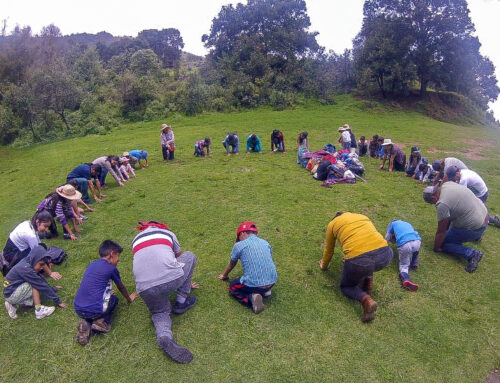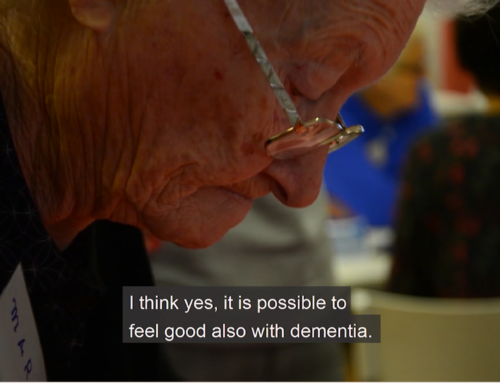February 2014. Through the rice fields, then under the palm trees we went briskly, Manish and I, in the white Mitsubishi van that his Ayurvedic clinic had just acquired. But we were not going to see patients. Manish had been kind enough to take me to an older couple, living alone under the lush greenery of Kerala, South India, while their children had made a life for themselves abroad. We left the asphalt road to turn onto a dry dirt path, orange-lit by the late afternoon sun. Finally, the van came to a halt in front of a two-story house that looked recently renovated. The driveway was spotlessly clean, the facade coated in pale yellow, and a wide silver tin roof protected the terraces. At the doorway stood a couple in their late seventies, both smiling widely. Against their figures, the house looked even taller.
Manish and I followed their invitation and entered the spacious living room. The dark marble floor was covered with a red rug, surrounded by enough settees to accommodate over twenty people. Apples, oranges, cake, cashew nuts and coffee were laid in front of us. But the conversation was slow; the empty seats swallowed our words. The smile fixed on the woman’s face only made the void more tangible. Her eyes lit up when she proudly reached for a calendar, picturing wheelchairs and taxis. She explained that her two sons had a company together in the United States offering transport to dialysis patients. When I asked her about how they kept in touch, the woman made a gesture towards the landline phone, resting in the corner.
“They call …”
“Often?”
“Yes, yes. Weekly or so.”

A woman waiting for the church service to start. Photo by the author.
Despite the impressive house and the well-tended garden, the feeling of desolation and loneliness that I perceived was difficult for me to shed. This seemed to be exactly the kind of situation I had been warned about. A few weeks before my meeting with this couple, a local man had laughed at my proposition of talking to older people whose adult children worked abroad. “Impossible!” he said. “They will never talk to you. These parents go about boasting about their children living abroad, but in reality they are lonely and abandoned. But they would never want to talk badly about their own children!”
In the context of intensified international labor migration and a demographic shift towards an aging population, what happens with care for older people? Scholars have argued that older people without children nearby experience “de facto childlessness” as they must organize their lives as if they had no children (Kreager and Schröder-Butterfill 2004). Others suggested that migrating children are “semi-absent,” providing financial but not other kinds of care that requires physical co-presence (Hromadžić 2018). Yet some forms of care have also been shown to be possible for transnational families (Hromadžić and Palmberger 2018; Baldassar and Merla 2014). Digital technologies are key in such “care transcending distance” (Miller et al. 2021), as they support different kinds of distant co-presence (Baldassar, Nedelcu, and Wilding 2016; Cabalquinto 2022) and “communicative care” (Arnold 2024), including through silences (Sampaio 2020).
Significantly, however, technologies are not just tools through which people achieve communication and co-presence, but they are key actors in shaping care through what I call “transnational care collectives” (Ahlin 2023). These are global assemblages of people and digital technologies through which care is enacted through specific practices, such as sharing everydayness over the phone or spending time together over the webcam (Ahlin 2020). Through tinkering with kin and non-kin members, digital devices, time zones, and schedules, each transnational care collective establishes its own dynamic. This dynamic constantly changes together with new technological developments, shifting telecommunication regulations, people’s varying health conditions, and fluctuating global political, economic, and social situations. At all times, however, the frequency of calls matters, to the point that this became a defining feature of “good” elder care at a distance within transnational families.

Sharing everydayness with the grandchildren abroad. Photo by the author.
January 2022. Through my smartphone, I followed Aaron as he climbed up the hill towards the mall in the Welsh town where he lived. Aaron was a nurse in his early 30s. He had moved to the United Kingdom (UK) for work four years earlier while his parents, both in their 70s, remained in Kerala. As he caught his breath, Aaron explained that he called his mother on WhatsApp every day. She was illiterate, but he had bought her a smartphone and taught her to use WhatsApp before he moved abroad. One of the main topics of their daily conversations was his father who suffered from chronic pulmonary obstructive disease (COPD). Aaron was an only child;because his father had refused to move abroad with him, Aaron managed care for him from afar. This included buying the medical devices, shipping them to India, and asking friends to set them up, as Aaron explained to me:
Now my house in Kerala is like a small hospital. There are three oxygen concentrators, two DPIs (dry powder inhalers), everything is there. I’m managing things like that over the phone, I talk and talk and talk to people. I have a few friends back home, and I ask them to help my parents when needed, like with setting up the equipment.
Frequent contact with his parents–and his friends–was crucial when Aaron’s father contracted COVID-19 in the spring of 2021. Seeing his father breathing heavily on the video, Aaron knew immediately that the situation was critical. He acted without delay, arranged an ambulance through the Internet and activated his friends to lobby for his father’s admission into the hospital. His video calls to his mother intensified even further: “My mom was calling me every ten minutes, even during my work time. So I couldn’t concentrate on my work, and I had to take a week of leave. I explained to her, “go left, go right, speak to that person, fill out this form.”
Beyond being a matter of life and death in such a crisis, daily calls were essential for adult children abroad to signal to their parents that their “caring attitude” continued despite geographic distance. They were also crucial to maintain the trust which was required for the parents to follow their children’s advice, particularly regarding health. As Anthony, who lived in Australia, explained:
I think care is the understanding and trust, it’s not touching, it’s not giving money … I call my parents every day. That’s a gesture. That’s how I show my love. I call them every day, I speak to them, I’m well informed and they discuss everything with me, I discuss everything with them.
Transnational care collectives do not seamlessly replace living together, which remains the epitome of good elder care in India. That would be an impossible aim to reach, since technological relationality is not equal to corporeal co-presence. Moreover, digital technologies influence how people relate to each other, how they practice care for each other and even who they are (Ahlin 2023).
Enacting care through transnational care collectives also requires work and resources, including buying digital technologies and taking care of them by providing the constant flow of electricity and credit. Yet, the people I encountered never complained to me about the effort they had to invest in these collectives. For most of them, remaining in India would translate into relatively low salaries which could limit their ability to provide financially for their parents in times of health crises. Rather than complain about the situation, people accepted migration as a fact of life to which they must adapt. And so, the children abroad accepted the practice of calling their parents frequently as their new filial duty, a development which was particularly striking for daughters (Ahlin and Sen 2020).
Enacting elder care, and healthcare more specifically, through transnational care collectives may not be the perfect option, and yet for many families this was and continues to be the optimal, and the most ethical, choice. But while most of the time digital technologies acted as if they collapsed the geographic distance between family members—“distance is just a number,” Aaron told me—at other times they made people acutely aware of it. As Aaron then added: “It’s good that I have a phone and can contact them, with the help of the world wide web.” Aaron laughed, “But yeah, indeed.” His voice suddenly softened. “I just miss them.”
References
Ahlin, Tanja. 2020. “Frequent Callers: ‘Good Care’ with ICTs in Indian Transnational Families”. Medical Anthropology 39 (1): 69–82. https://doi.org/10.1080/01459740.2018.1532424.
———. 2023. Calling Family: Digital Technologies and the Making of Transnational Care Collectives. New Brunswick, NJ: Rutgers University Press.
Ahlin, Tanja, and Kasturi Sen. 2020. “Shifting Duties: Becoming ‘Good Daughters’ through Elder Care Practices in Transnational Families from Kerala, India.” Gender, Place & Culture 27 (10): 1395–1414. https://doi.org/10.1080/0966369X.2019.1681368.
Arnold, Lynnette. 2024. Living Together Across Borders: Communicative Care in Transnational Salvadoran Families.
Baldassar, Loretta, and Laura Merla. 2014. Transnational Families, Migration and the Circulation of Care: Understanding Mobility and Absence in Family Life. London: Routledge.
Baldassar, Loretta, Mihaela Nedelcu, and Raelene Wilding. 2016. “ICT-Based Co-Presence in Transnational Families and Communities: Challenging the Premise of Face-to-Face Proximity in Sustaining Relationships.” Global Networks 16 (2): 133–44. https://doi.org/10.1111/glob.12108.
Cabalquinto, Earvin Charles B. 2022. (Im)Mobile Homes: Family Life at a Distance in the Age of Mobile Media. New York: Oxford University Press.
Hromadžić, Azra. 2018. “‘Where Were They Until Now?’ Aging, Care, and Abandonment in a Bosnian Town.” In Care across Distance: Ethnographic Explorations of Aging and Migration, edited by Azra Hromadžić and Monika Palmberger, 156–70. Oxford: Berghahn.
Hromadžić, Azra, and Monika Palmberger. 2018. Care across Distance: Ethnographic Explorations of Aging and Migration. New York: Berghahn Books.
Kreager, Philip, and Elisabeth Schröder-Butterfill. 2004. Ageing without Children: European and Asian Perspectives. Oxford: Berghahn.
Miller, Daniel, Laila Abed Rabho, Patrick Awondo, Maya de Vries, Marília Duque, Pauline Garvey, Laura Haapio-Kirk, et al. 2021. The Global Smartphone: Beyond a Youth Technology. UCL Press. https://doi.org/10.14324/111.9781787359611.
Sampaio, Dora. 2020. “Caring by Silence: How (Un)Documented Brazilian Migrants Enact Silence as a Care Practice for Aging Parents.” Journal of Intergenerational Relationships 18 (3): 281–300. https://doi.org/10.1080/15350770.2020.1787038.
Tanja Ahlin holds a PhD from the University of Amsterdam where she is currently a postdoctoral researcher on “Human Factor in New Technologies.” Her work explores technologies, (health)care, aging and gender. She is the author of Calling Family: Digital Technologies and the Making of Transnational Care Collectives (Rutgers University Press, 2023).
Cite as: Ahlin, Tanja. 2024. “Transnational Care Collectives Against Elder Abandonment”. In “Aging Globally: Challenges and Possibilities of Growing Old in an Unsettling Era,” edited by Magdalena Zegarra Chiappori, American Ethnologist website, 7 August 2024. [https://americanethnologist.org/online-content/collections/aging-globally/transnational-care-collectives-against-elder-abandonmentby-tanja-ahlin/]




